

Damion Smy
GWM Cannon Alpha ute, Tank 300 HEV and Tank 500 recalled
14 Hours Ago
The Honda HR-V is a thrifty, refined, spacious and attractive crossover. But seriously, only four seats?!

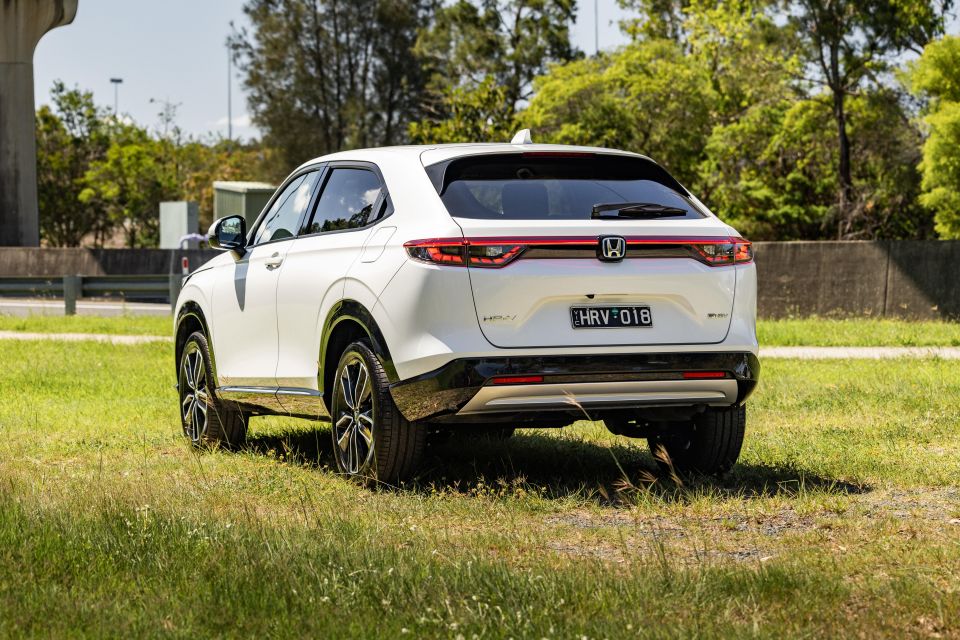

Where expert car reviews meet expert car buying – CarExpert gives you trusted advice, personalised service and real savings on your next new car.
You can’t buy a Honda Jazz or Odyssey anymore, but there’s a bevy of SUV options at the Japanese brand’s showrooms – all of which have recently been redesigned.

In addition to new generations of the small Honda HR-V, as featured here, and the mid-sized CR-V, Honda has a ZR-V that slots in between them – and confusingly is called the HR-V in North America.
In top-spec hybrid e:HEV L guise, the HR-V is priced right in the thick of the ZR-V range and at the very bottom of the CR-V range. But to get a hybrid ZR-V or CR-V, you’ll be paying thousands more.
The HR-V has a distinctive look of its own, with slab sides, a body-colour grille, a full-width tail light assembly, and hidden rear door handles.
It arguably looks better in person than it does in photos, and it has a more upright, SUV-like look than the ZR-V, sloped rear window aside.
It has plenty of showroom appeal, but it’s controversially missing one feature taken for granted in this segment. More on that later.
Honda keeps it simple with the HR-V range: you can have a petrol-powered model, or you can opt for the hybrid and get a lot of extra kit in the process.
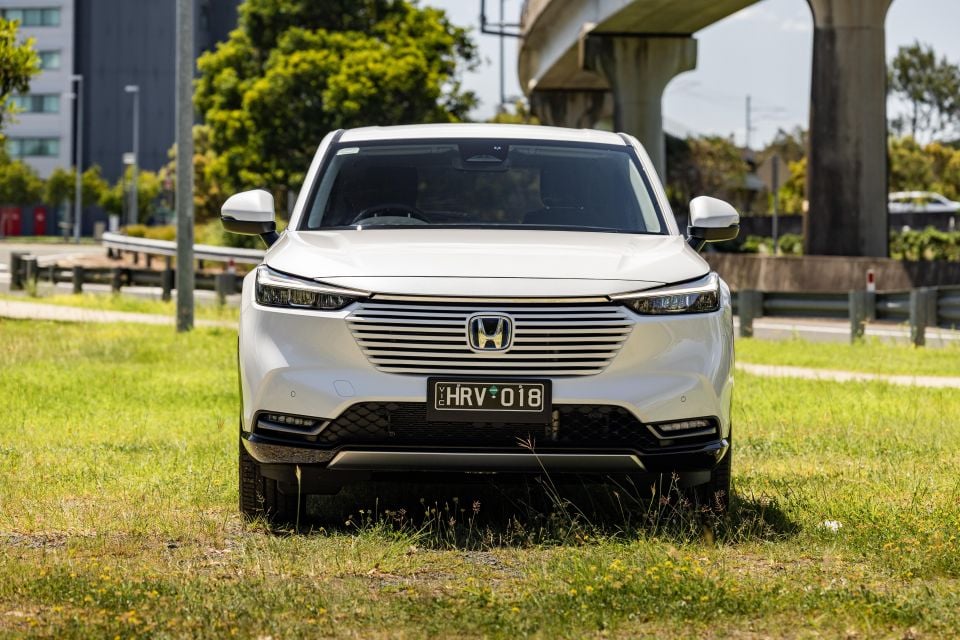
It’s priced at $47,000 drive-away, though Honda is currently offering it for $45,200 drive-away until March 31; it’s also offering $1800 off the base Vi X, for a price tag of $34,900 drive-away.
There’s a range of hybrid options available in the small SUV segment. The most affordable is the GWM Haval Jolion Lux Hybrid at $36,990 drive-away (with a temporary $34,990 D/A promotion at the moment), with even the top-spec Ultra Hybrid ($37,990/$40,990 drive-away) undercutting the HR-V.
The mid-range Toyota Corolla Cross GXL Hybrid can be had in front-wheel drive guise for $40,230 before on-roads or $44,309 drive-away based on a Sydney postcode, while a top-spec Hyundai Kona Hybrid Premium is $43,500 before on-roads or $47,256 drive-away.
There are more small hybrid SUVs coming, too, with the Nissan Qashqai e-Power and Jeep Compass e-Hybrid due soon.
Buy your new car without the stress. It's fast, simple and completely free.

Great service from Travis and team, second time I have used this business would not hesitate to recommend them to anyone
Craig C.
Purchased a Ford Ranger in Sunshine Coast, QLD
CarExpert helped Craig save thousands on his Ford Ranger, now let us save you on your next new car.
Find a dealThe Honda HR-V may not feel quite as premium inside as its ZR-V big sibling, but it nevertheless avoids feeling bargain basement.
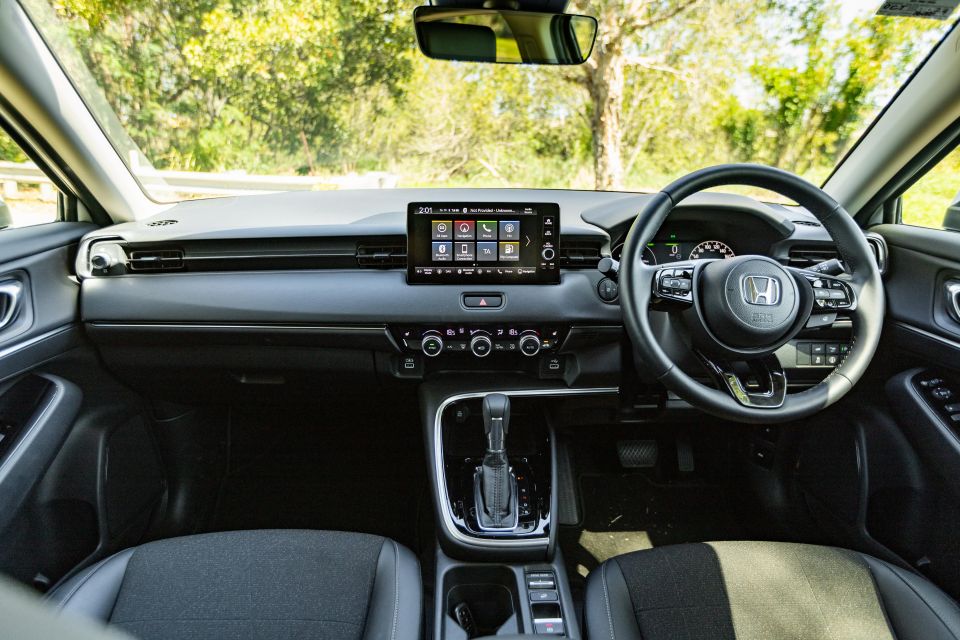
In addition to a simple, elegant dashboard design, there are some classy touches. The climate controls are the same as the ZR-V, with lovely knurled dials with red or blue backlighting when you adjust the temperature.
The instrument cluster, which neatly integrates analogue and digital elements, is a class act.
It even includes the traditional Honda-style chunky warning lights, but the execution is a lot nicer than past clusters from the brand, while we like how turn-by-turn instructions from smartphone mirroring navigation appear up here.
There’s leatherette padding on the sides of the centre console, but hard plastic abounds on the dashboard and on the rear doors.
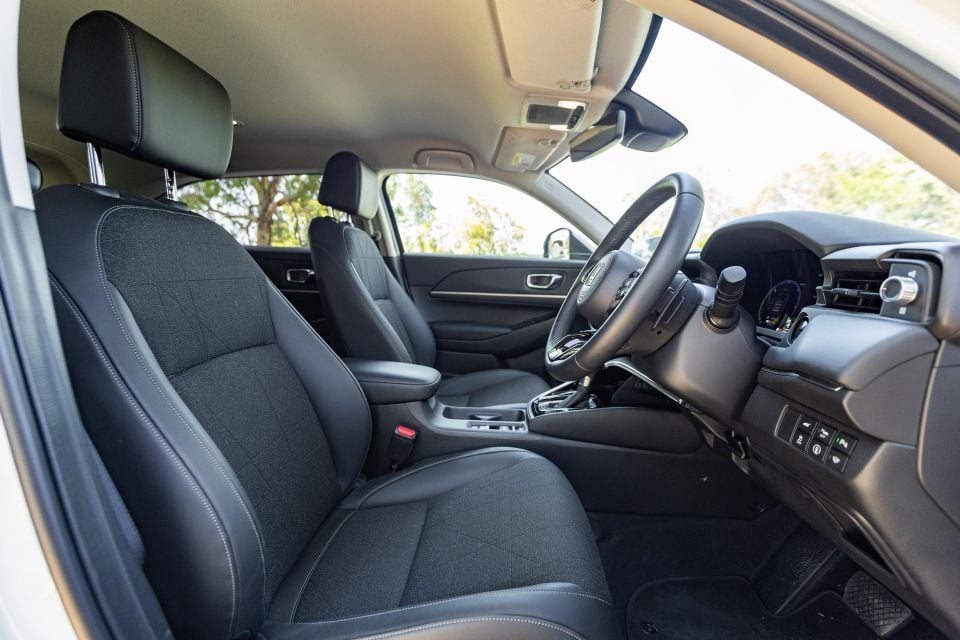
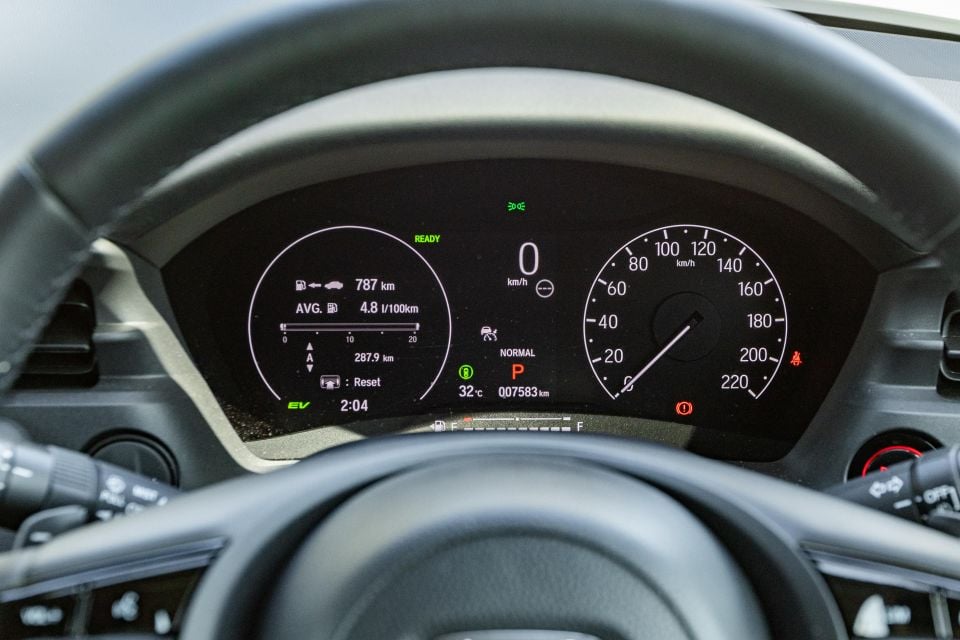
And yet, it’s not the cheap, scratchy-looking kind you may find in other affordable SUVs. Instead, everything has attractive graining and is assembled with care.
The only trim piece I took exception to was the centre of the dash, which bows slightly if you press it… but who is going to be doing that?
The HR-V doesn’t have the distinctive honeycomb mesh trim found in other Hondas like the Civic, but there are some slim metal-look elements on the dash and doors for contrast.
The seats may feature black upholstery, but there are pops of contrast to stop it all looking too cheap… or funereal. There are leatherette bolsters, while the cloth upholstery has an attractive diamond pattern and a speckled effect to it.
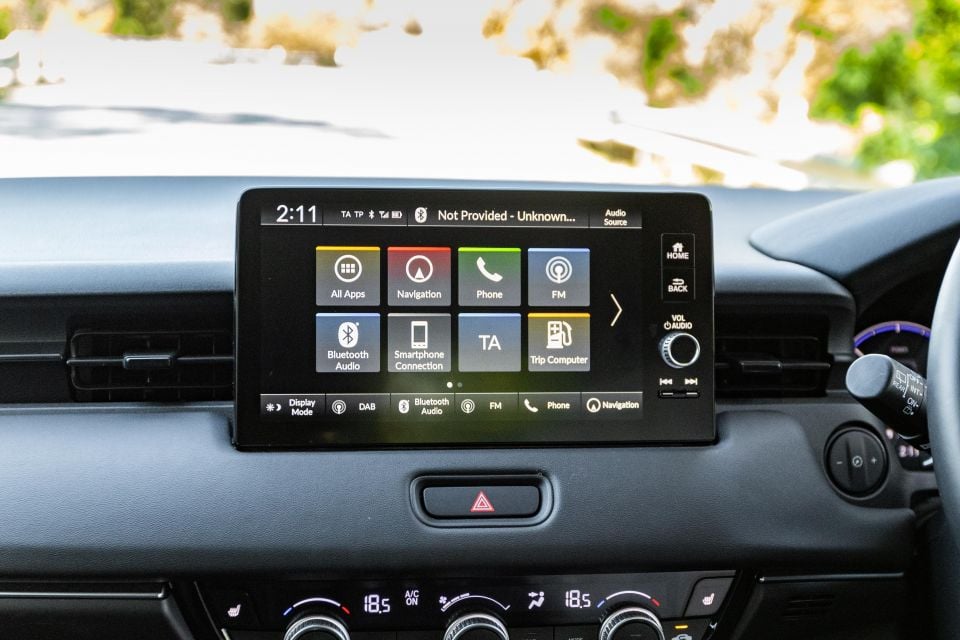
The look is attractive, and the seats won’t have you pining for leather. They’re comfy, too.
The infotainment system has a similar style of user interface to older Honda units, but it looks sharper and feels more responsive, though we did notice a slight, occasional lag with Android Auto.
Reversing camera clarity is average, falling short of rivals like the GWM Haval Jolion. The footage also appears almost black and white at night time. Nevertheless, we’ve seen worse.
Cleverly, the air-conditioning will turn down when you’re using voice prompts.
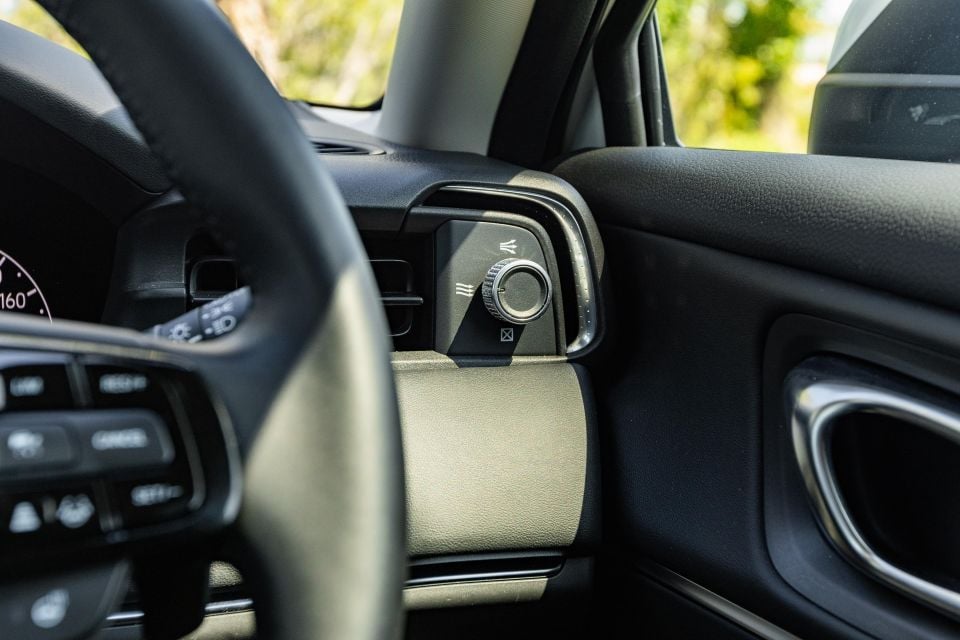
Speaking of clever details, take a look at the air vents. Instead of just being able to be opened and closed, there’s a tactile knob next to them that allows you to either have air sent directly ahead or split into three directions. It’s an unusual yet neat feature.
I’m usually pretty easy to please when it comes to seating, but I found the HR-V’s driver seat always felt a little too high. The best seating position I could get still resulted in my legs feeling a bit tight after a long drive. There’s no power adjustment for the seat, either.
The front seats are heated and warm up quickly, while the car will remember your heated seat settings when you next start it up.
The rear centre seatbelt in the HR-V wasn’t compliant with Australian Design Rules, so Honda simply threw its toys out of the pram and declared the car a four-seater.
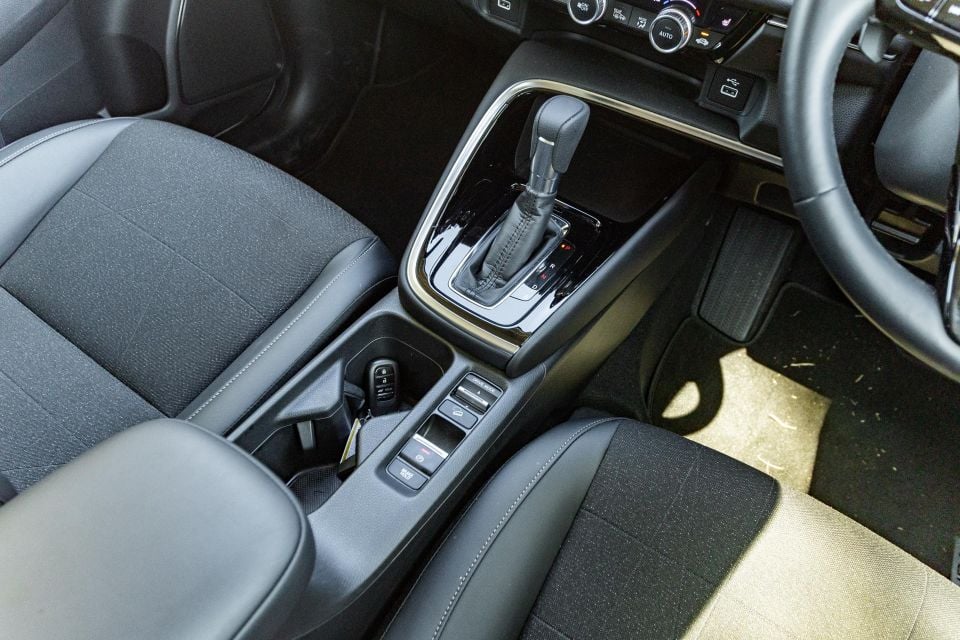
Is it ridiculous Australia has so many specific regulations, which often force companies to spend money making changes that apply to only one market? It sure is!
But is it also disappointing to see a company offer a vehicle in one of Australia’s highest-volume segments with just four seatbelts? You bet.
You mightn’t find yourself carrying four passengers often, but in just a few weeks with the car the lack of a centre seatbelt proved mighty inconvenient for me.
What makes this especially frustrating is the fact the HR-V has a spacious back seat. Ok, so sitting three abreast isn’t going to be as comfy as a Kluger. Nevertheless, there’s plenty of headroom, ample legroom, and a mostly flat floor.
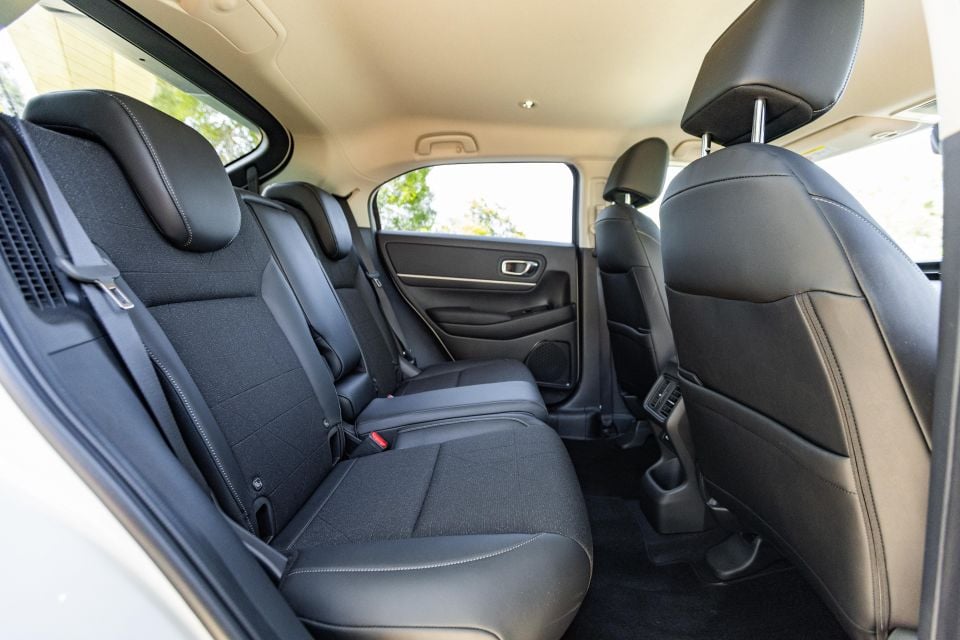
There are two USB outlets back here, plus a little cubby and a fold-down armrest – well, that centre position needs to be useful for something!
The door handles – situated in the C-pillar – are a bit plasticky. I realise this is an HR-V design cue, but Honda isn’t fooling anybody as it’s quite clear this is a five-door SUV and not some kind of coupe. The doors themselves are well-weighted and don’t need a slam to shut properly, though.
Then there’s the HR-V’s load-carrying capability. This is a seriously practical little SUV, lack of a centre seatbelt aside.
While there’s a relatively average 304L of boot space behind the rear seats, dropping those sees the seat base slide forward to make a completely flat load bay.
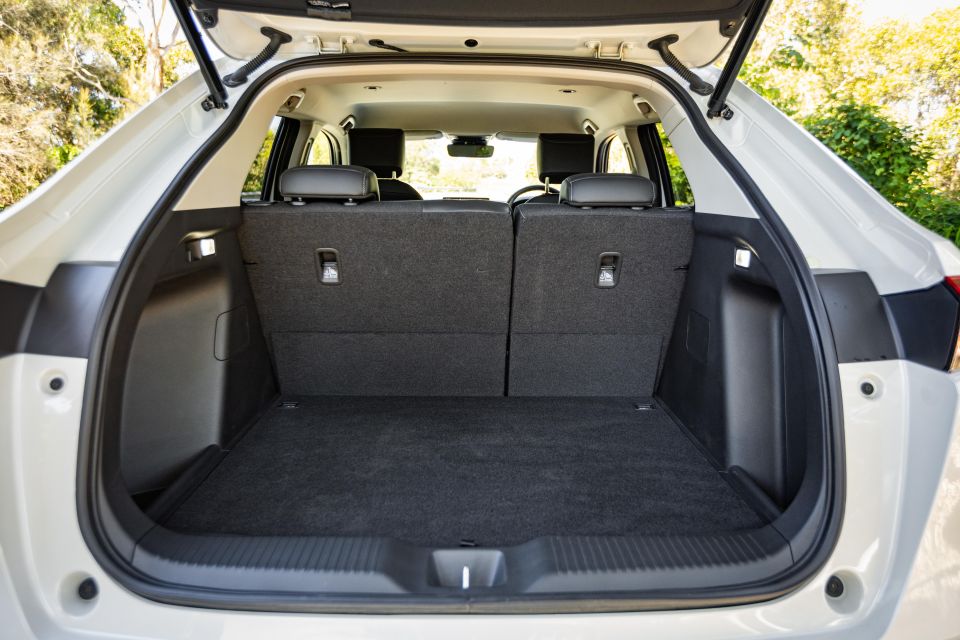
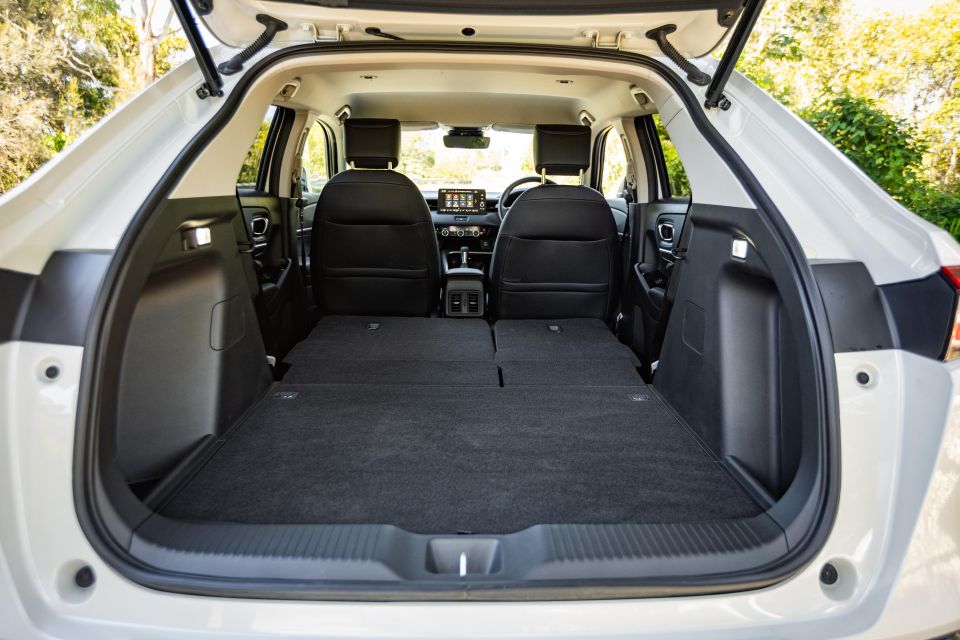
Honda calls them Magic Seats, and they turn the HR-V into a veritable van. All up, there’s 956L of boot space measured to the windows, or 1274L measured to the roof.
Under the boot floor, there’s a handy storage compartment, though you’ll only find a tyre repair kit and not a spare wheel.
Power in the HR-V e:HEV L comes from a 1.5-litre naturally aspirated four-cylinder petrol engine running the Atkinson cycle, paired with two electric motors and a small lithium-ion battery pack.
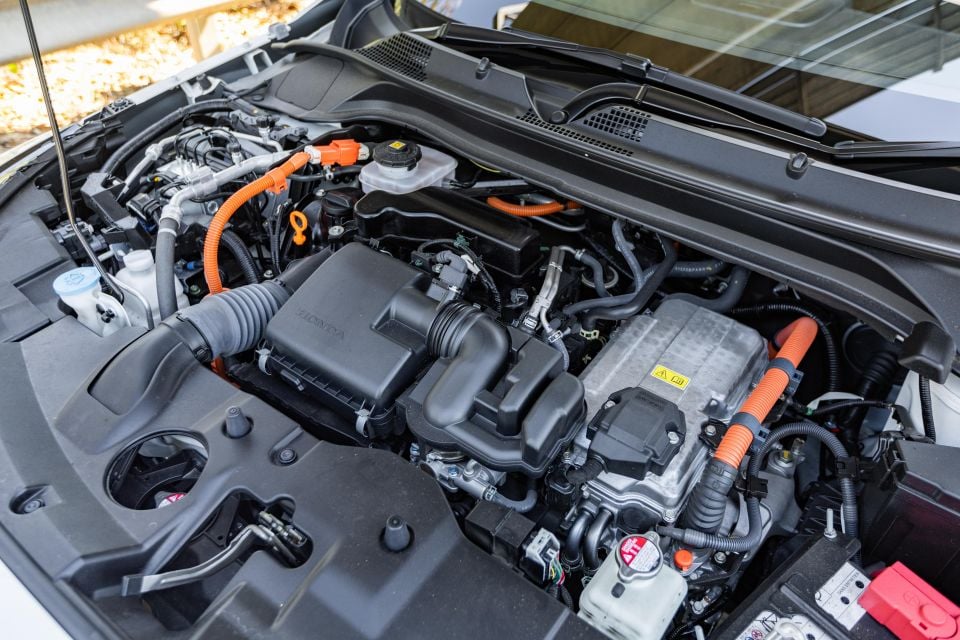
Drive is sent exclusively to the front axle via what Honda calls a fixed-gear transmission coupled to a ‘power control unit’, something otherwise referred to as an e-CVT.
The hybrid powertrain has total outputs of 96kW of power between 4000 and 8000rpm and 253Nm of torque between 0 and 3500rpm. In previous testing, we recorded a 0-100km/h time of 10.16 seconds.
I had this HR-V for an extended booking over the Christmas/New Year’s period, and while petrol wasn’t the most expensive it had been in recent memory, it wasn’t cheap either.
So it was a pleasant surprise when the HR-V was consistently averaging 5L/100km. It briefly went up to 5.2L/100km, and over a loop comprising inner-city, suburban and highway driving it managed 4.5L/100km. But over the course of a few weeks, it sat consistently at 5L/100km.
The official claim is 4.3L/100km, 1.5L/100km thriftier than the base petrol HR-V.
Start the HR-V up and you may hear a grumbly sound from its hybrid powertrain that sounds like your refrigerator is overheating.
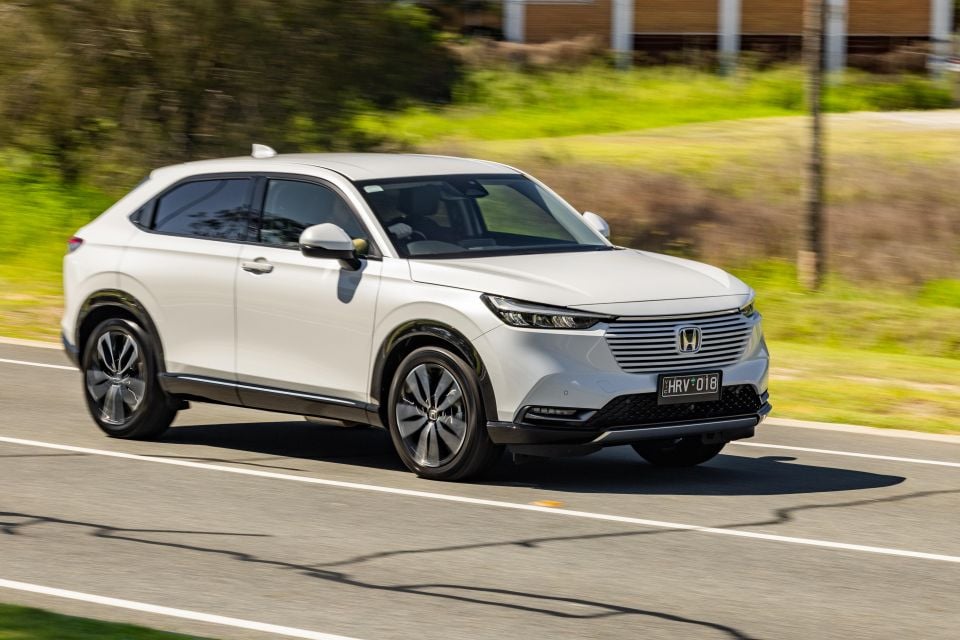
This subsides, however, and once you get on the road you’ll find the car running quietly on electric power at low speeds, resulting in a serene cabin. Push that accelerator pedal a bit further, and you then hear one of Honda’s lovely four-cylinder engines.
The engine sings, and it’s mated with a transmission that isn’t like some CVTs and e-CVTs. It simulates gear ratios, thereby avoiding the droning, rev-flaring sensation you may be expecting.
The HR-V feels punchy and responsive around town, with the combination of petrol engine and electric motors working well together.
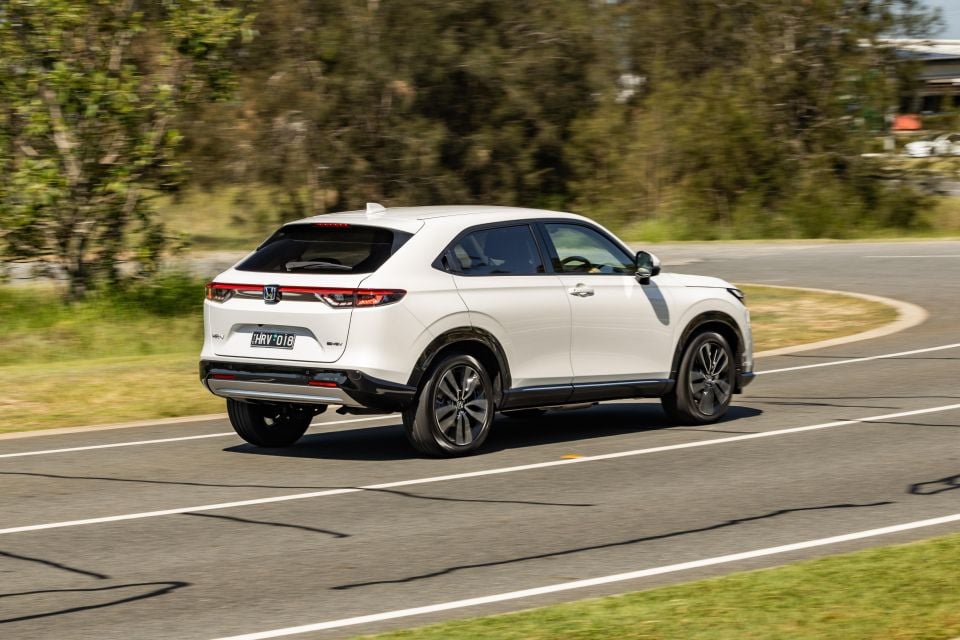
It feels a little out of its element out in the hills, however, as we found it could be quite breathless on steeper grades.
Even with our foot planted to the floor, however, the HR-V never sounds too raucous, as noise suppression is very good for the class.
At highway speeds, there’s very little in the way of wind noise, with only some tyre roar disturbing the silence. By the standards of the segment, however, this level of tyre roar is perfectly normal.
The ride is refined, too. You’ll feel things like expansion joints, and yet these impacts are quelled quite quickly, and overall the HR-V feels very comfortable to drive.
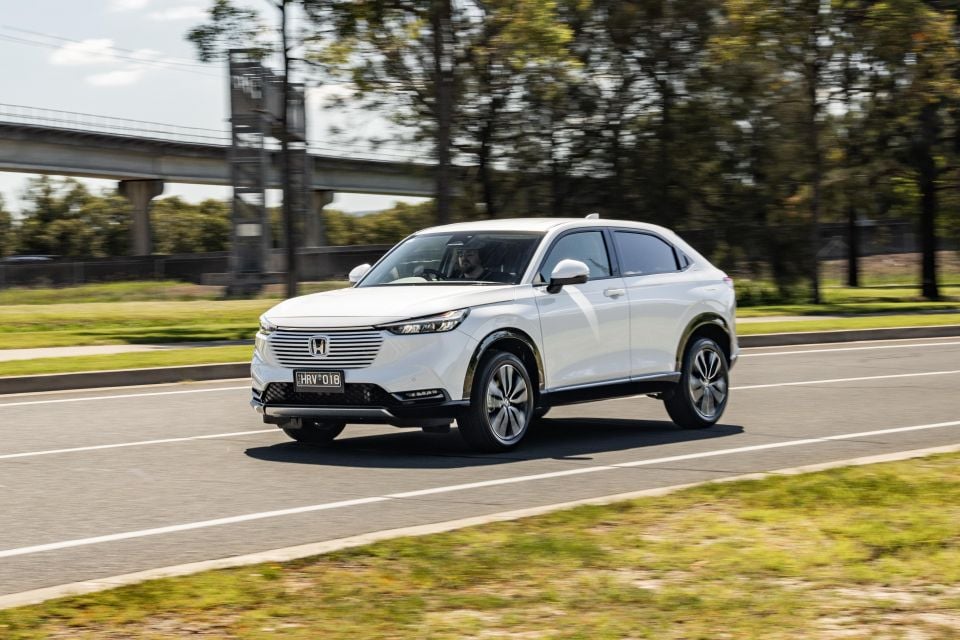
Where expert car reviews meet expert car buying – CarExpert gives you trusted advice, personalised service and real savings on your next new car.
With a torsion beam at the rear, the HR-V may feel ever so slightly unsettled at times, but for the most part it’s composed including over unsealed roads.
It doesn’t feel quite as car-like as the larger ZR-V, with a touch of body roll in the corners, but it’ll hang in there. We wouldn’t call it sporty, but it’s more than competitive within this segment.
The steering has a good amount of feel, too, though the brake pedal doesn’t.
The HR-V has two different lane support systems, both of which work at speeds between 72km/h and 180km/h. One is activated via pressing a button on the steering wheel, and provides more active intervention to stop you from leaving your lane.
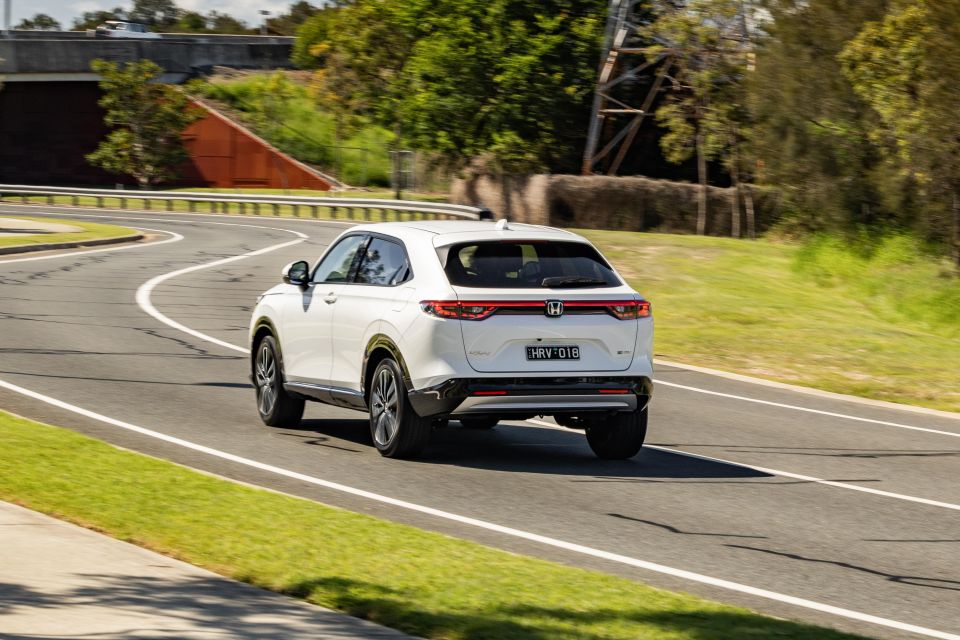
I found it worked better than the same system in the ZR-V, while even the standard lane-keep assist proved well-tuned and not overly intrusive.
The presence of active cornering lights is very much appreciated when turning or following a winding road, while we like how the car remembers if you’ve turned on auto hold.
As with many hybrids, you can also bring up an energy flow metre that shows whether the petrol engine or electric motors are in operation.
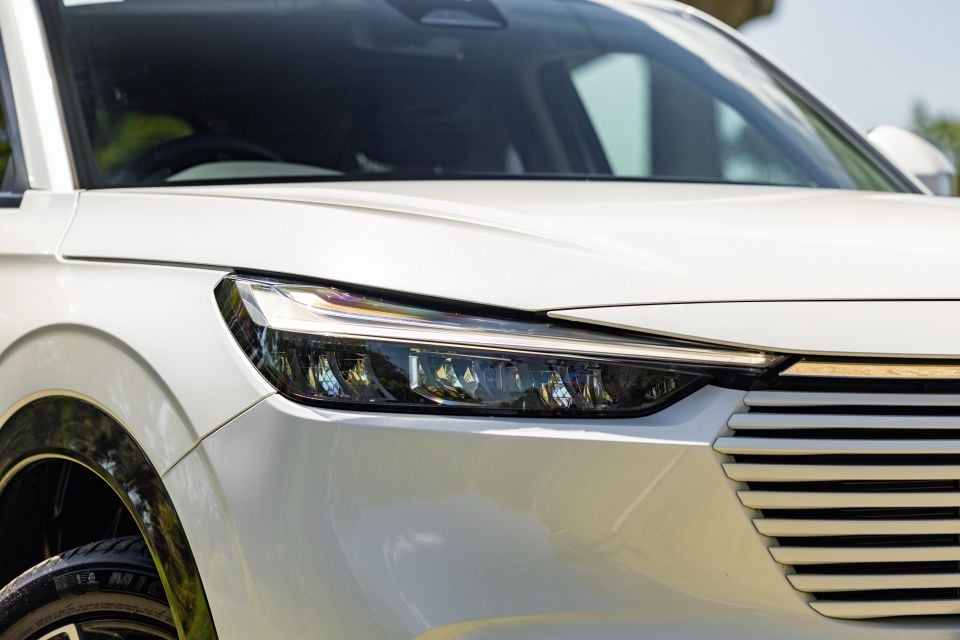
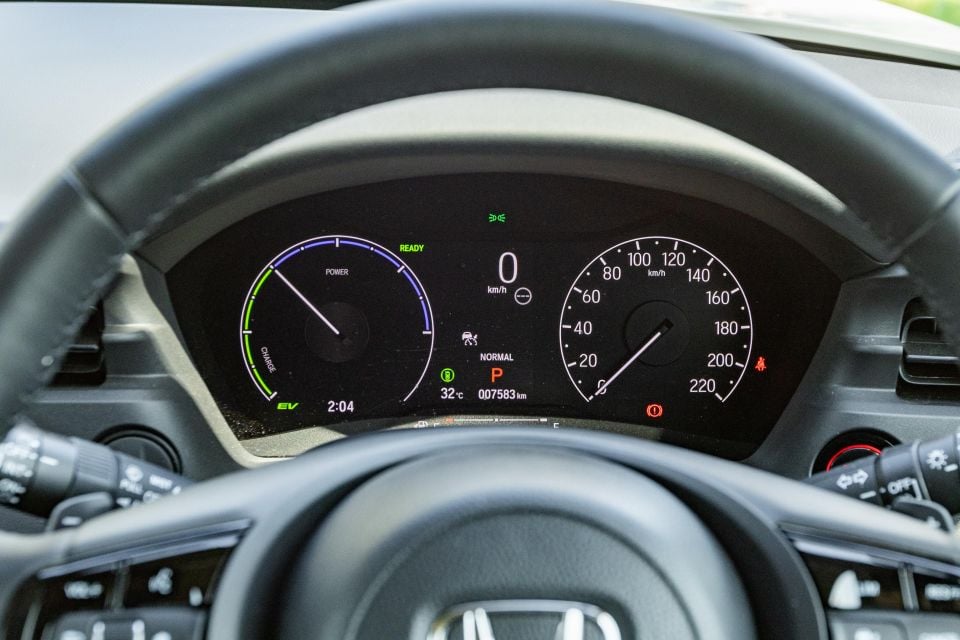
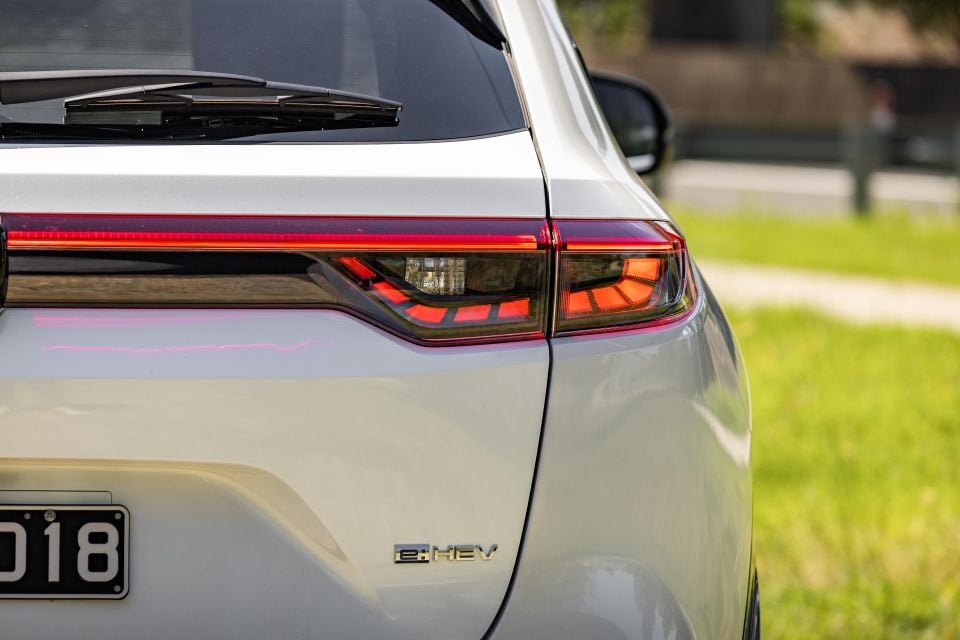

HR-V e:HEV L highlights:
There are some interesting inclusions and omissions there. A hands-free power tailgate and heated steering wheel are far from common in this segment, and yet there’s no power driver’s seat.

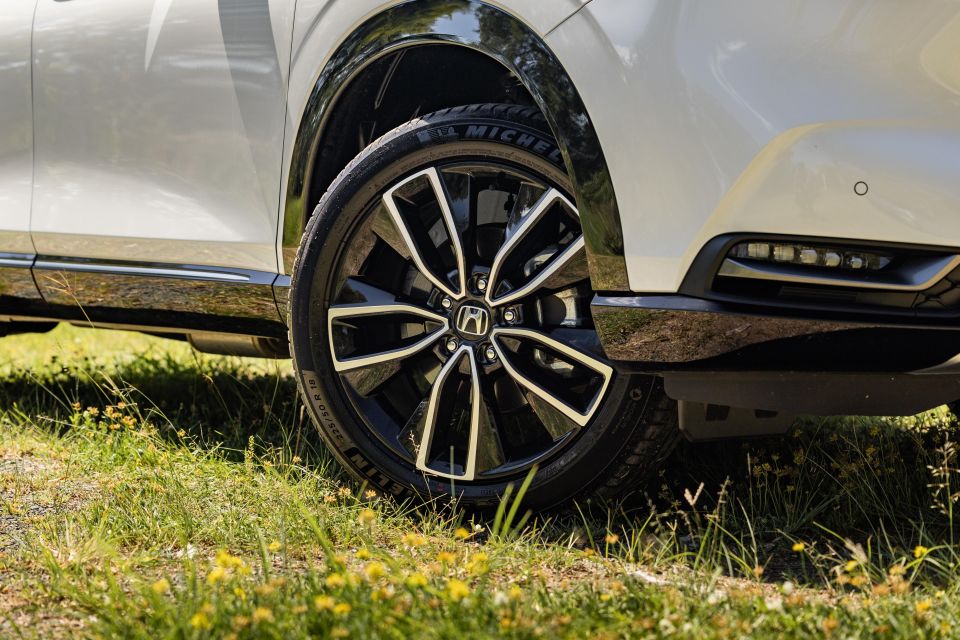
This is over and above what you find on the HR-V Vi X:
The Honda HR-V has a four-star safety rating from ANCAP, based on testing conducted in 2022.

It received an adult occupant protection rating of 82 per cent, a child occupant protection rating of 77 per cent, a vulnerable road user protection rating of 72 per cent, and a safety assist rating of 69 per cent.
Standard safety equipment includes:
HR-V e:HEV L adds:
The HR-V is backed by a five-year, unlimited-kilometre warranty, though Honda is currently offering a seven-year warranty for a limited time.
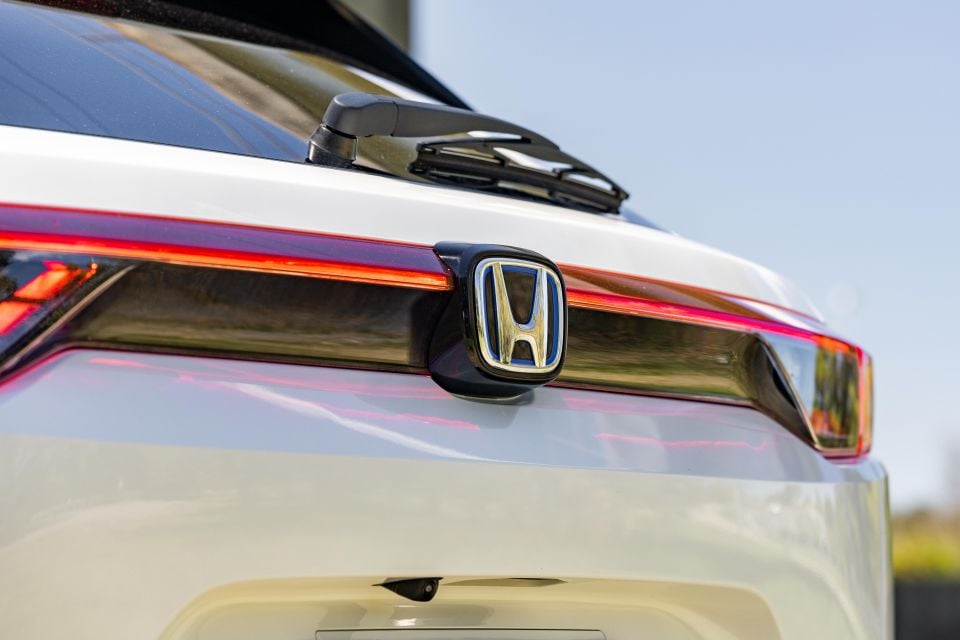
Honda has among the cheapest servicing in the industry, with the HR-V’s first five services capped at $199 each. Intervals are 12 months or 10,000km.
It’s not the cheapest small hybrid SUV or the most well-equipped, but there’s a lot to like about the Honda HR-V.
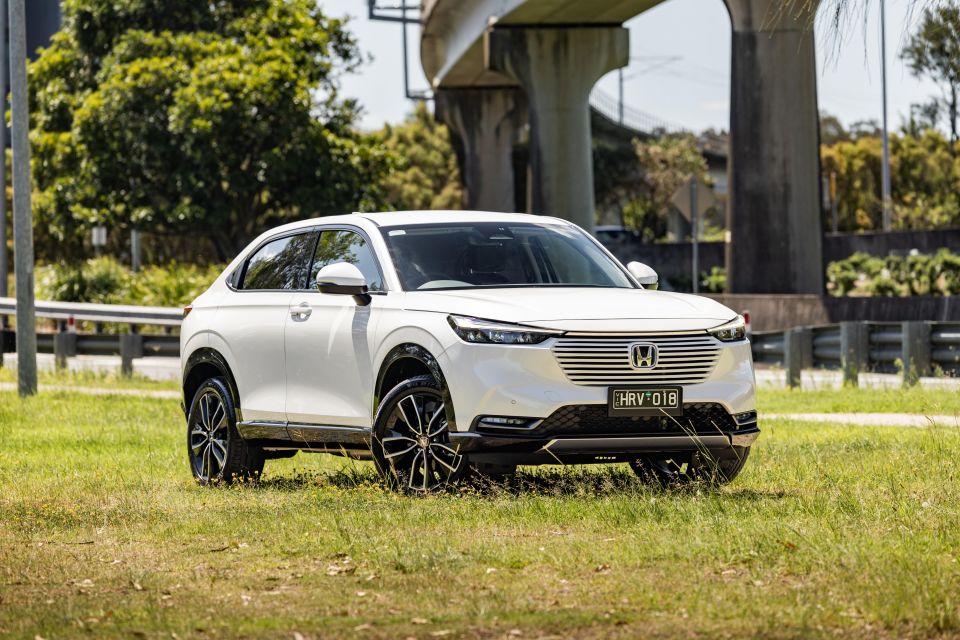
Its cabin is spacious, and those Magic Seats make carrying larger loads a lot easier. What a pity Honda couldn’t engineer a solution for Australia that would see the HR-V be more than just a four-seater.
The HR-V is quiet and refined, and the powertrain is a sweet thing even if it runs out of puff on steeper grades.
With distinctive styling and a quality feel, the HR-V makes for a compelling option in the small hybrid SUV segment. Just make sure you check out its increasingly large flock of rivals before you sign on the dotted line.

Click the images for the full gallery
BUY: Honda HR-V MORE: Everything Honda HR-V
Where expert car reviews meet expert car buying – CarExpert gives you trusted advice, personalised service and real savings on your next new car.
William Stopford is an automotive journalist with a passion for mainstream cars, automotive history and overseas auto markets.


Damion Smy
14 Hours Ago


CarExpert.com.au
5 Days Ago


Damion Smy
5 Days Ago


Damion Smy
6 Days Ago


Josh Nevett
6 Days Ago


Max Davies
6 Days Ago